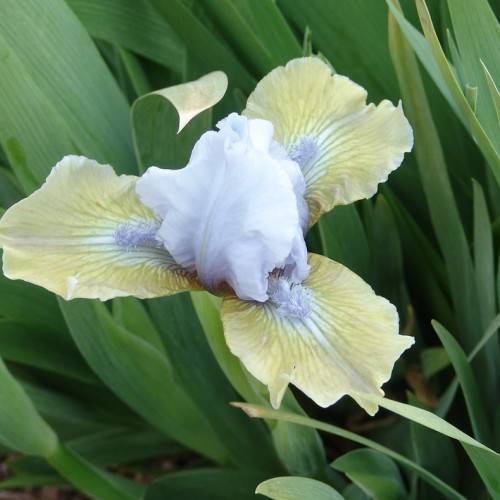
standard dwarf bearded iris
Iris 'Peach Petal Pie'
Cycle:
Herbaceous Perennial
Watering:
Average
Hardiness Zone:
3 - 8
Flowers:
Flowers In Spring
Sun:
Full sun
Leaf:
Yes
Growth Rate:
Low
Maintenance:
Moderate
Drought Tolerant:
Yes
Care Level:
Medium
watering
Standard Dwarf Bearded Iris (Iris 'Peach Petal Pie') need to be watered once a week for best results. They should be watered thoroughly, so that water reaches the bottom of the root system, until the top inch of soil is moist. For the first few weeks after planting, it's best to water twice a week. During the summer, you might need to increase watering during heat waves or periods of extended dryness to ensure that the Iris 'Peach Petal Pie' remain healthy and flowering. During the winter, watering can be reduced to once every other week.
sunlight
The standard dwarf bearded iris (Iris 'Peach Petal Pie') needs full sun to bloom properly. It is best when planted in a location that receives at least 6 hours of direct sunlight each day. During the hottest part of the summer, it is also important to provide some afternoon shade to prevent the foliage from wilting. The iris may need a minimum of 4 hours of direct sunshine each day during the fall and winter months to keep it healthy, but in cooler climates, it can tolerate slightly less sunlight. When planting in an area where there is not a consistent amount of direct sunlight, supplement with artificial lighting if necessary.
pruning
Standard dwarf bearded iris (Iris 'Peach Petal Pie') should be pruned as soon after blooming as possible. To get the most out of the flowering season it is best to cut the old flower stalks down to the base of the plant near the end of the flowering season. This will enable new flower stalks to form for the subsequent flowering season. During the flowering season you should also deadhead as needed as this will encourage additional flowers to form. Also any damaged or diseased foliage should be removed. At the end of the season, once the foliage has died back, you should then cut back the remaining foliage to the base of the plant, removing any dead or decayed foliage.
